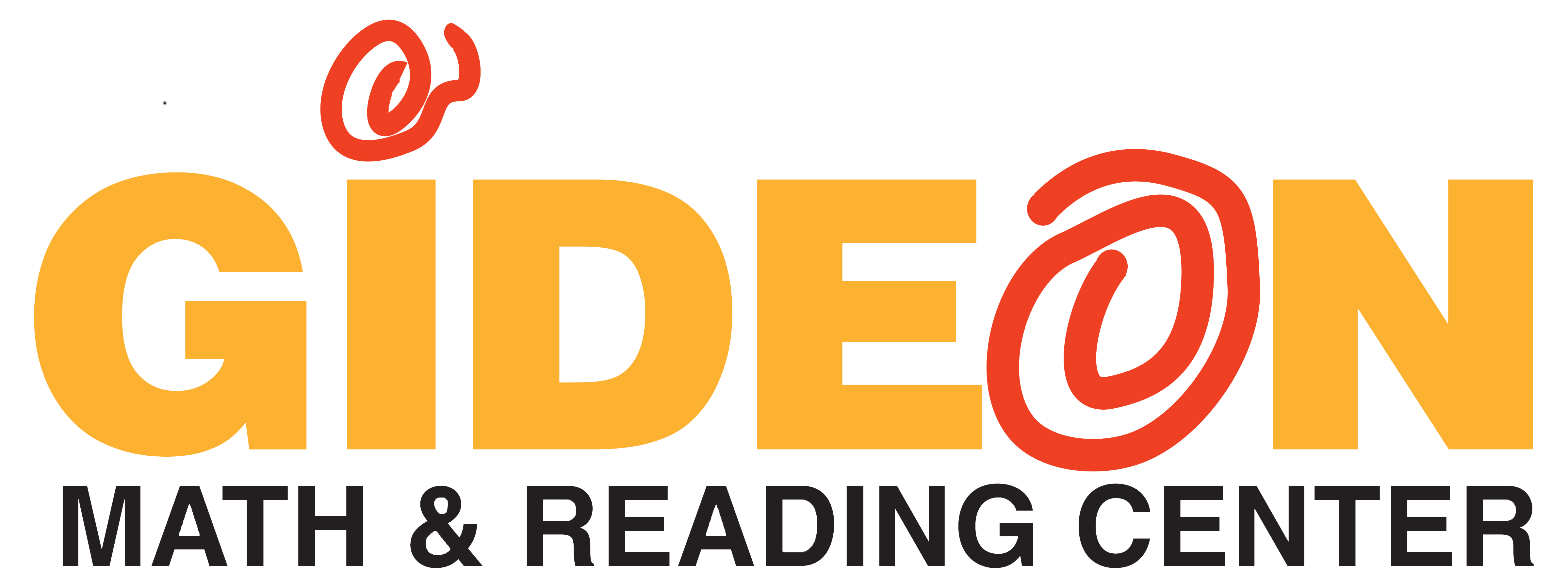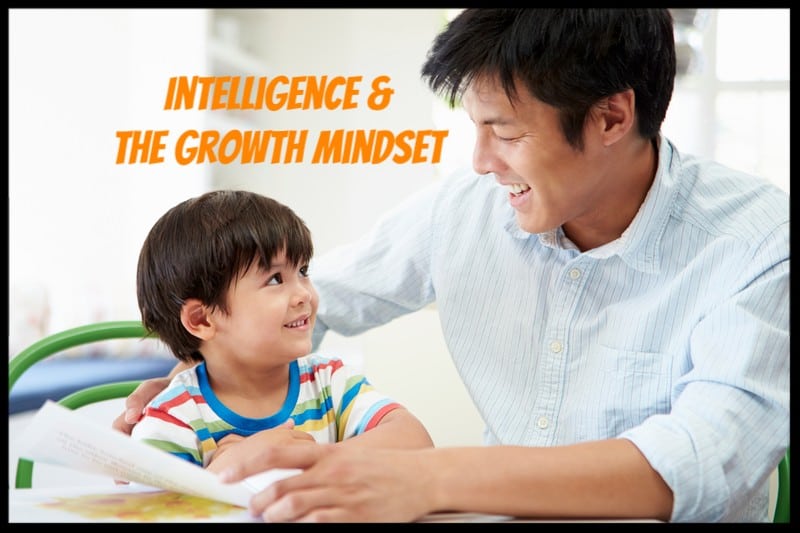
Independent Learners, Math, Reading, Young Learners
Many people wrongly believe intelligence is fixed at birth. Many factors will affect school performance such as stable family life, proper nutrition, and parent involvement in studies, but genetics is usually NOT one of them.
This article at Quartz written by 2 professors focuses on the math ability aspect of the intelligence is genetic theory and how it becomes a “self-fulfilling prophecy.” After working with math students through teaching and tutoring for years, they discovered this pattern:
- Different kids with different levels of preparation come into a math class. Some of these kids have parents who have drilled them on math from a young age, while others never had that kind of parental input.
- On the first few tests, the well-prepared kids get perfect scores, while the unprepared kids get only what they could figure out by winging it—maybe 80 or 85%, a solid B.
- The unprepared kids, not realizing that the top scorers were well-prepared, assume that genetic ability was what determined the performance differences. Deciding that they “just aren’t math people,” they don’t try hard in future classes, and fall further behind.
- The well-prepared kids, not realizing that the B students were simply unprepared, assume that they are “math people,” and work hard in the future, cementing their advantage.
What the difference they see? The preparation! At Gideon, we completely agree. You can get ahead early or catch up later, but you have to put in the work. The addition facts don’t memorize themselves. Starting with struggling older students is harder as you have to change their attitude into believing they can succeed and they have more work to cover to catch up, BUT it is very possible and we do it every day. You simply have to put in the time.
This doesn’t just apply to math but to all areas. The article continues to discuss how many studies have been done showing how attitude is critical in high achievers.
Psychologists Lisa Blackwell, Kali Trzesniewski, and Carol Dweck presented these alternatives to determine people’s beliefs about intelligence:
- A-You have a certain amount of intelligence, and you really can’t do much to change it. OR B-You can always greatly change how intelligent you are.
They found that students who agreed that “You can always greatly change how intelligent you are” got higher grades. But as Richard Nisbett recounts in his book Intelligence and How to Get It, they did something even more remarkable:
“Dweck and her colleagues then tried to convince a group of poor minority junior high school students that intelligence is highly malleable and can be developed by hard work…that learning changes the brain by forming new…connections and that students are in charge of this change process.”
The results? Convincing students that they could make themselves smarter by hard work led them to work harder and get higher grades. The intervention had the biggest effect for students who started out believing intelligence was genetic. (A control group, who were taught how memory works, showed no such gains.)
But improving grades was not the most dramatic effect, “Dweck reported that some of her tough junior high school boys were reduced to tears by the news that their intelligence was substantially under their control.” It is no picnic going through life believing you were born dumb—and are doomed to stay that way.
Americans don’t like being compared to Asians – especially in math, but the reality is our views tend to be very different with education. With their longer school years and attitudes of “persistence in the face of failure”, they continue towards their goals, while some Americans argue we don’t need Algebra I anymore. Or if a child is struggling to read, baseball practice should not come first.
One way to help Americans excel at math is to copy the approach of the Japanese, Chinese, and Koreans. In Intelligence and How to Get It, Nisbett describes how the educational systems of East Asian countries focus more on hard work than on inborn talent:
1. “Children in Japan go to school about 240 days a year, whereas children in the United States go to school about 180 days a year.”
2. “Japanese high school students of the 1980s studied 3 ½ hours a day, and that number is likely to be, if anything, higher today.”
3. “[The inhabitants of Japan and Korea] do not need to read this book to find out that intelligence and intellectual accomplishment are highly malleable. Confucius set that matter straight twenty-five hundred years ago.”
4. “When they do badly at something, [Japanese, Koreans, etc.] respond by working harder at it.”
5. “Persistence in the face of failure is very much part of the Asian tradition of self-improvement. And [people in those countries] are accustomed to criticism in the service of self-improvement in situations where Westerners avoid it or resent it.”
We certainly don’t want America’s education system to copy everything Japan does (and we remain agnostic regarding the wisdom of Confucius). But it seems to us that an emphasis on hard work is a hallmark not just of modern East Asia, but of America’s past as well. In returning to an emphasis on effort, America would be returning to its roots, not just copying from successful foreigners.
Read the rest of this article HERE.
While some aspects of an Asian culture of education such as daily routines of nothing but school, homework, and private tutoring should be tempered with downtime, hobbies, and play, there are lessons to be learned from their success. We should not simply excuse some kids out of basic subjects if they struggle.
At Gideon struggling indicates a weak foundation rather than an innate lack of ability. We find the cracks and fill them! A great example of this model at work is with one of our gold stars, Avery. She was struggling with math in kindergarten. Her parents knew that with some extra practice she could improve. To say she’s improved is an understatement. In just 5 years through daily practice of 20-30 minutes with Gideon, she has excelled all the way to pre-algebra as a 5th grader which is typically a 7th Honors or 8th grade subject and continues to do well. She put in the time and effort and has received her reward! Watch her interview below.
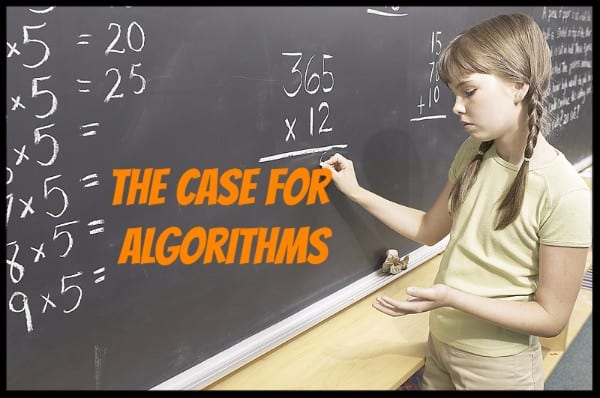
Independent Learners, Math
In THIS article, “The Faulty Logic of The Math Wars” in the New York Times, Alice Crary, a philosophy professor, and W. Stephen Wilson, a math professor argue that the ideals that math reformists claim to be working towards when removing standard algorithms (such as long division) from elementary math textbooks are actually being moved away from if the thought processes behind the algorithms are analyzed differently.
Today the emphasis of most math instruction is on — to use the new lingo — numerical reasoning. This is in contrast with a more traditional focus on understanding and mastery of the most efficient mathematical algorithms. …
The reformist’s case rests on an understanding of the capacities valued by mathematicians as merely mechanical skills that require no true thought. The idea is that when we apply standard algorithms we are exploiting ‘inner mechanisms’ that enable us to simply churn out correct results. We are thus at bottom doing nothing more than serving as sorts of “human calculators.” …
This mechanical image of calculation is the target of a number of philosophical critiques. … Wittgenstein suggests that analogies between mathematical computations and mechanical processes only seem appealing if we overlook the fact that real machines have parts that bend and melt and are invariably subject to breakdown. … That is, it seems clear that, in order to be justified in believing that I have mastered an algorithm, I require a type of mental activity that isn’t simply causally generated. Far from being genuinely mechanical, such calculations involve a distinctive kind of thought.
That the use of standard algorithms isn’t merely mechanical is not by itself a reason to teach them. It is important to teach them because, as we already noted, they are also the most elegant and powerful methods for specific operations. This means that they are our best representations of connections among mathematical concepts. Math instruction that does not teach both that these algorithms work and why they do is denying students insight into the very discipline it is supposed to be about.
While reformists claim the need to change traditional math is based on the need to promote independent thought, the authors draw parallels to other subjects which are not being argued (usually) to start requiring creative thought in the early grades.
To begin with, it is true that algorithm-based math is not creative reasoning. Yet the same is true of many disciplines that have good claims to be taught in our schools. Children need to master bodies of fact, and not merely reason independently, in, for instance, biology and history. Does it follow that in offering these subjects schools are stunting their students’ growth and preventing them from thinking for themselves?
Further, the reasoning the reformists so desire needs to be built upon a solid foundation of “bodies of fact” such as parts of cell, the dates of wars fought in America, and the basic algorithms of math. If you do not know the basics, it will be difficult for someone to think deeply about more difficult topics within a subject. No one is arguing that the why should not be taught; let’s just not do a disservice to our students by not showing them the best way to do something. In Gideon we always aim to teach the why AND the best. In higher addition for example, visual movement exercises among place value (such as changing 12 ones into 1 ten and 2 ones) are used before carrying or regrouping, but the basic algorithm of putting a 1 above the tens column to aid in speedy addition is practiced until mastered.
Even if we sympathize with progressivists in wanting schools to foster independence of mind, we shouldn’t assume that it is obvious how best to do this. Original thought ranges over many different domains, and it imposes divergent demands as it does so. Just as there is good reason to believe that in biology and history such thought requires significant factual knowledge, there is good reason to believe that in mathematics it requires understanding of and facility with the standard algorithms.
Read the entire article HERE.
This article received a lot of comments such as these below:
John, an outraged mathematician from NY remarked:
How would the reform template work if applied to learning a musical instrument? What would the result be if beginning guitar students were not taught the basic chords? A lot of wasted time and a cacophony. Creativity can and should come later, once the basics are mastered. The same is true in mathematics.
(Another) John, a college professor from VA said:
I am … a multilevel modeler — aka, fancy statistics. … it would have been impossible for me achieve what I have without their instruction in what I am now being told was a method that limited my creativity.
The ability to perform basic arithmetic operations without thinking too much about them frees me … to think more about more complex mathematical operations/concepts.
Occasionally, I have students who have difficulty with simple arithmetic operations. These students also have difficulty understanding how to set up the models that they need to analyze their data and perhaps more importantly, they have difficulty interpreting the results.
Basic arithmetic operations are the simple sentences of mathematics and by extension, of disciplines such as statistics that rely on arithmetic operations. If you do not know how to construct a simple sentence, paragraphs would seem to be out of reach.
Read the rest of the comments HERE by scrolling the bottom of the page.
For more thoughts on this article and subject go HERE to Joanne Jacob’s blog where she links up with articles from Barry Garelick who discusses that reformists claim to be teaching the superior ‘understanding’ instead of a traditionalist’s mere ‘skills’:
. . . The reform approach to “understanding” is teaching small children never to trust the math, unless you can visualize why it works. If you can’t “visualize” it, you can’t explain it. And if you can’t explain it, then you don’t “understand” it.
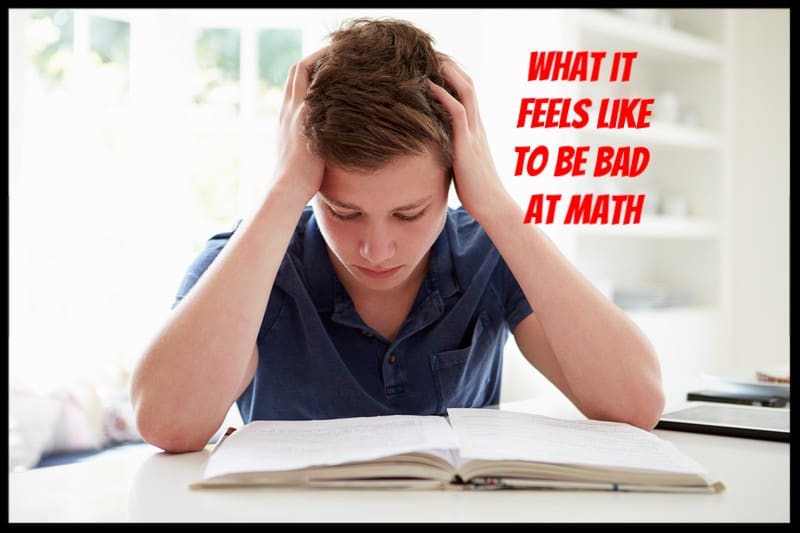
Independent Learners, Math
Via JoanneJacobs.com
The author of the blog Math with Bad Drawings is a current math teacher (and former math student) and discusses the feelings and actions of someone who is floundering at math from both his teaching and his own experiences.
As a math teacher, it’s easy to get frustrated with struggling students. They miss class. They procrastinate. When you take away their calculators, they moan like children who’ve lost their teddy bears. (Admittedly, a trauma.)
Even worse is what they don’t do. Ask questions. Take notes. Correct failing quizzes, even when promised that corrections will raise their scores. Don’t they care that they’re failing? Are they trying not to pass?
I noticed the same things while teaching Algebra I and geometry in Austin. I would offer to help during class or in after-school tutoring sessions, but they would simply decline. They would NEVER remember to bring their books to class. And boy, did they show their despair over no calculators on tests and quizzes! I realized then that many of my Algebra I students did not know 6 x 7 and had no clue about negative numbers. These students were able to pass into 9th grade while having failed the previous middle school math courses. While I did as much pre-algebra review as I could, I offered extra drill practice to the students who hadn’t memorized the basic facts yet. Of course, they declined those as well. Six weeks into the year, one failing student simply remarked, “I’ll retake it in summer school.”
The author of the blog had success with math until his senior year topology course at Yale. Then he started to struggle and wasn’t sure how to handle it.
My failure began as most do: gradually, quietly. I took dutiful notes from my classmates’ lectures, but felt only a hazy half-comprehension. While I could parrot back key phrases, I felt a sense of vagueness, a slight disconnect – I knew I was missing things, but didn’t know quite what, and I clung to the idle hope that one good jolt might shake all the pieces into place.
But I didn’t seek out that jolt. In fact, I never asked for help. (Too scared of looking stupid.) Instead, I just let it all slide by, watching without grasping, feeling those flickers of understanding begin to ebb, until I no longer wondered whether I was lost. Now I knew I was lost.
So I did what most students do. I leaned on a friend who understood things better than I did. I bullied my poor girlfriend (also in the class) into explaining the homework problems to me. I never replicated her work outright, but I didn’t really learn it myself, either. I merely absorbed her explanations enough to write them up in my own words, a misty sort of comprehension that soon evaporated in the sun. (It was the Yale equivalent of my high school students’ worst vice, copying homework. If you’re reading this, guys: Don’t do it!)
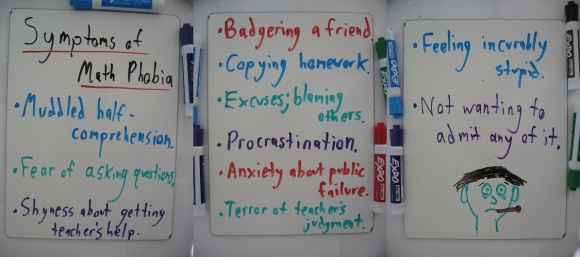
I had a similar experience with an upper level college math course, Real Analysis, which I have so blocked from my memory I can’t even tell you what it was about. While I didn’t seek out help either (even though I should have!), I made it through due to the curve as it seemed most people were more clueless than me.
The author, finally desperate, did what he should have done all along. Ask for help from the professor!
I was sweating in the elevator up to his office. The worst thing was that I admired him. Most world-class mathematicians view teaching undergraduates as a burdensome act of charity, like ladling soup for unbathed children. He was different: perceptive, hardworking, sincere. And here I was, knocking on his office door, striding in to tell him that I had come up short. An unbathed child asking for soup.
Teachers have such power. He could have crushed me if he wanted.
He didn’t, of course. Once he recognized my infantile state, he spoon-fed me just enough ideas so that I could survive the lecture.
Teachers want their students to TRULY understand the concepts. Almost all are happy to give extra explanations when asked, but they aren’t mind readers. Encourage your children to not be shy.
Sometimes a student starts a question with, “Sorry, but I need help with…” as if they should be ashamed they haven’t mastered it already. I always remind them, “Don’t apologize. This is my job! You are learning, and this is why I’m here.”
I tell my story to illustrate that failure isn’t about a lack of “natural intelligence,” whatever that is. Instead, failure is born from a messy combination of bad circumstances: high anxiety, low motivation, gaps in background knowledge.
Most of all, we fail because, when the moment comes to confront our shortcomings and open ourselves up to teachers and peers, we panic and deploy our defenses instead. For the same reason that I pushed away Topology, struggling students push me away now.
Not understanding Topology doesn’t make me stupid. It makes me bad at Topology.
And I would argue that like many things had the author had more time and asked for more help with topology (or me with Real Analysis) he would have likely gotten a lot better at it. Writing this blog post has me wishing to be able to retake the class, but I imagine that will wait for another day.
Read the rest of this great blog HERE.
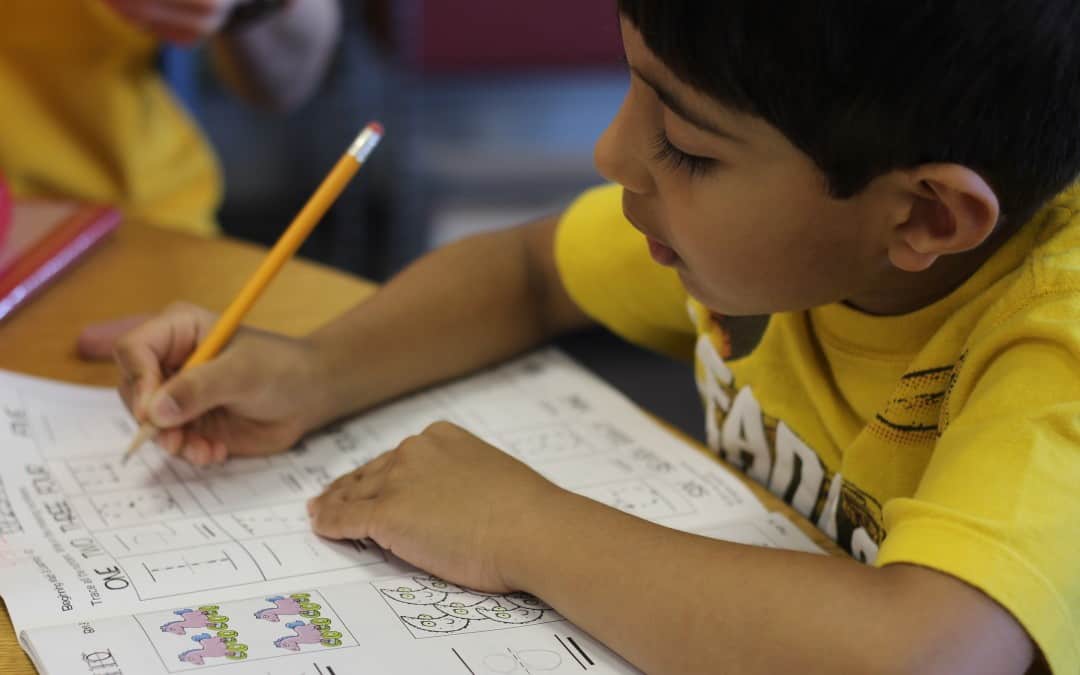
Math, Young Learners
On Joanne Jacob’s blog, she highlighted a recent AP article discussing the correlation between early number sense and math ability several years later. The University of Missouri study found that 7th graders who struggled were the same ones who struggled in 1st grade.
“The gap they started with, they don’t close it,” says Dr. David Geary, a cognitive psychologist who leads the study that is tracking children from kindergarten to high school in the Columbia, Mo., school system. “They’re not catching up” to the kids who started ahead.
If first grade sounds pretty young to be predicting math ability, well, no one expects tots to be scribbling sums. But this number sense, or what Geary more precisely terms “number system knowledge,” turns out to be a fundamental skill that students continually build on, much more than the simple ability to count.
What’s involved? Understanding that numbers represent different quantities – that three dots is the same as the numeral “3” or the word “three.” Grasping magnitude – that 23 is bigger than 17. Getting the concept that numbers can be broken into parts – that 5 is the same as 2 and 3, or 4 and 1. Showing on a number line that the difference between 10 and 12 is the same as the difference between 20 and 22.
Like so many things, practice and repetition can overcome previous shortcomings. When your child does the initial free diagnostic test at Gideon, we are looking for any holes in the foundation such as ability to pick the larger number and whether the addition facts are memorized. Then we start wherever the student is showing a lack of mastery in order to build up on solid ground – no matter if the material is covered several grade levels before or after their current starting point.
Like reading, early and often parent interactions can go a long way. Any time you read or count with a child is good, but they give some even more specific tips if you want to take it that extra step.
… Geary sees a strong parallel with reading. Scientists have long known that preschoolers who know the names of letters and can better distinguish what sounds those letters make go on to read more easily. So parents today are advised to read to their children from birth, and many youngsters’ books use rhyming to focus on sounds.
Likewise for math, “kids need to know number words” early on, he says.
NIH’s Mann Koepke agrees, and offers some tips:
-Don’t teach your toddler to count solely by reciting numbers. Attach numbers to a noun – “Here are five crayons: One crayon, two crayons…” or say “I need to buy two yogurts” as you pick them from the store shelf – so they’ll absorb the quantity concept.
-Talk about distance: How many steps to your ball? The swing is farther away; it takes more steps.

Independent Learners, Math, Reading, Writing
In this blog post at edweek.org, Illina Garon discusses how her many of her 10th grade students don’t believe they will need math or English for their future jobs.
I was incredulous. “You want to be astronauts, and you think you’re not going to need math?” I turned to the actress. “Or English?”
No, they told me. They were certain that most of what they were learning in high school was totally irrelevant to their future career choices. Except for a few kids who muttered “Yo, these naive people are making me tight!” and rolled their eyes, my 10th graders seemed confident in their position.
I was asked many times while teaching Algebra I when this would used in the ‘real world’. While I wished I had researched more about what certain careers require to give them more reasons, I used the argument that I didn’t want to limit them in whatever they wanted to do. Mastering Algebra I would open up many more opportunities. It is difficult to know what you want to do at age 15. How much harder and longer is the road to become an engineer with a weak math background? I believe it can still be done, but many would be discouraged and go down a different, easier path. Engineering is not better than the career not needing math, but I don’t want it blocked off to those would want it due to lack of foresight.
Beyond the inherent frustration, this conversation showed me something I hadn’t realized before. I’ve long advocated for alternatives to the traditional “college for all” academic path, such as trade and career-tech programs (welding, auto mechanics, carpentry, cosmetics, etc.) But I’ve realized the students also need a crash course in career awareness–specifically, letting them know what careers are even out there (many careers such as IT, accounting, engineering, or hospitality management, because of their lack of intrinsic visibility in the kids’ daily lives or in TV, are often off their radar), and what these careers require, both in skills and in day-to-day activities. The fact that my 10th graders do not realize that being an astronaut requires math is, I think, almost as serious a problem as whatever deficits they may have in the subject to begin with.
Read the rest of this blog post here.

